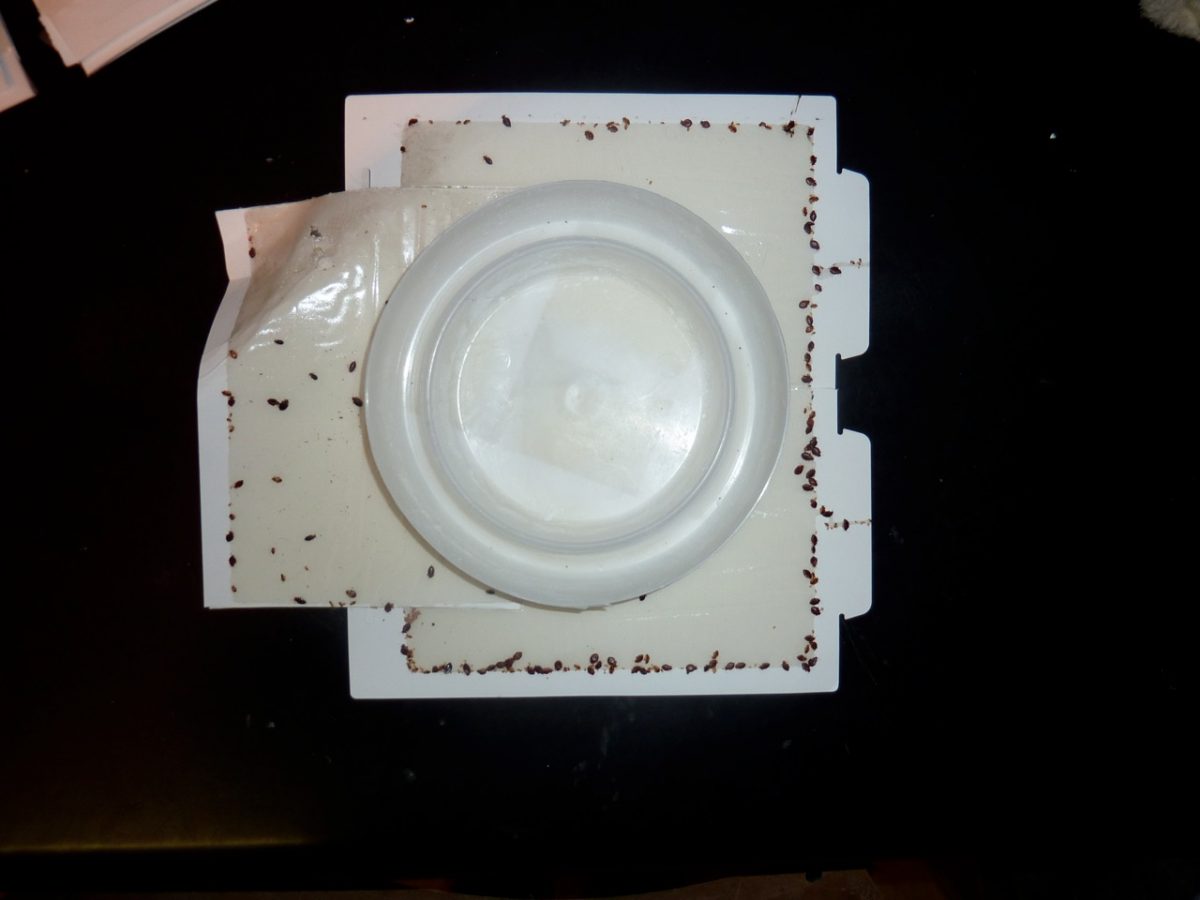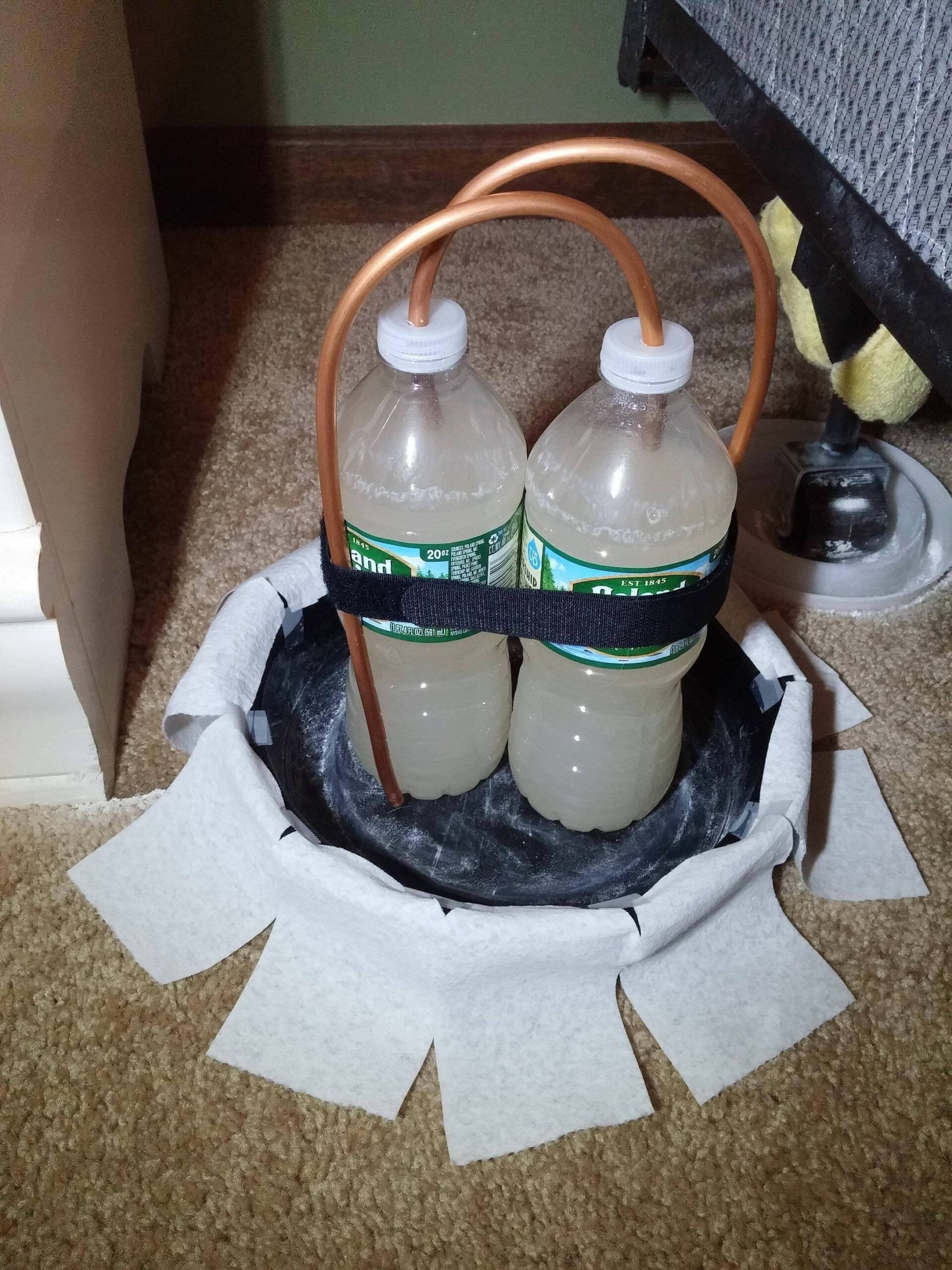To trap bed bugs with CO2, set up a DIY trap using dry ice or yeast and sugar to produce CO2, attracting the bugs, then catch them using a sticky surface or a vacuum. This simple method takes advantage of bed bugs’ attraction to CO2 and effectively traps them without the need for harmful chemicals.
Bed bugs are notorious for causing sleepless nights and itchy bites, making them a common nuisance for many people. One effective, environmentally friendly way to deal with these pests is to use CO2 to attract and trap them. By understanding how to utilize CO2 to create a simple trap, you can effectively manage bed bug infestations without resorting to harmful chemicals.
This article will explore the process of trapping bed bugs with CO2 for an environmentally friendly and effective pest control solution.

Credit: www.youtube.com
Understanding Bed Bug Behavior
Understanding bed bug behavior is crucial for effective trapping methods. Utilizing CO2 as an attractant lures bed bugs into traps, disrupting their reproduction cycle. This natural approach proves to be highly effective in managing bed bug infestations without the use of harmful chemicals.
Understanding Bed Bug BehaviorNocturnal Nature of Bed Bugs Bed bugs are nocturnal insects, meaning they are most active during the night. They have a remarkable ability to sense body heat and CO2 exhaled by humans, prompting them to emerge from their hiding spots to feed on blood. This behavior makes them difficult to detect during the day, as they prefer to remain hidden in tight cracks and crevices near their host’s resting areas.Attraction to CO2 Bed bugs are highly attracted to CO2, using it as a primary cue to locate their human hosts. When we breathe, we exhale CO2, creating a trail that bed bugs can follow to find their next blood meal. Understanding this attraction to CO2 is crucial in developing effective bed bug traps that exploit the insect’s sensitivity to this gas.To effectively lure and trap bed bugs, the use of CO2-emitting devices can be highly effective. These devices simulate the presence of a potential host by releasing controlled amounts of CO2, effectively drawing bed bugs out of their hiding places and into traps.In summary, the nocturnal nature of bed bugs and their strong attraction to CO2 play a crucial role in understanding their behavior, and this knowledge is essential for devising effective strategies to trap and control these persistent pests.Remember, proper understanding of bed bug behavior is vital for effectively addressing infestations and preventing their spread.Utilizing Co2 To Trap Bed Bugs
Bed bugs are notoriously difficult to eliminate, but utilizing CO2 as a lure to trap them has proven to be an effective method. CO2, a colorless and odorless gas, can be leveraged to attract bed bugs, leading to their capture. In this blog post, we will delve into the explanation of CO2 as a lure and the mechanism of trapping bed bugs with CO2.
Explanation Of Co2 As A Lure
CO2 is a natural byproduct of human respiration and is known to attract bed bugs. These pests are drawn to the presence of CO2 as it indicates the presence of a host for them to feed on. By replicating the CO2 emissions of a human host, it is possible to lure bed bugs into traps, thereby facilitating their capture. This method utilizes the bed bug’s keen sense of smell and their natural instincts to seek out sources of CO2.
Mechanism Of Trapping Bed Bugs With Co2
Trapping bed bugs with CO2 involves creating a device that emits CO2 to mimic the breath of a human. As bed bugs are attracted to the CO2, they are lured into the trap where they become immobilized and can be easily captured. This method provides an environmentally friendly and non-toxic approach to controlling bed bug infestations, as it does not involve the use of harmful chemicals.
Diy Co2 Traps
- 2-liter plastic bottle
- Yeast
- Sugar
- Warm water
- Black spray paint
- Electrical tape
Step-by-step guide to making a homemade CO2 trap
- Cut the top off a 2-liter plastic bottle and discard.
- Mix 1 tablespoon of yeast and 1 tablespoon of sugar in 1/4 cup of warm water.
- Pour the yeast mixture into the bottom half of the bottle.
- Place the top half of the bottle upside down into the bottom half to create a funnel.
- Secure the two pieces together with black spray paint.
- Seal any gaps with electrical tape.

Credit: www.winnipegbedbugheating.com
Commercial Co2 Traps Available
When it comes to effectively trapping and eliminating bed bugs, commercial CO2 traps can be a valuable tool. These traps are specifically designed to attract bed bugs using carbon dioxide (CO2) and other chemical attractants. In this section, we will explore the types of commercial CO2 traps available, as well as the pros and cons of using them.
Types Of Commercial Co2 Traps
There are several types of commercial CO2 traps that you can use to combat bed bug infestations. Here are some of the most common ones:
- Active CO2 traps: These traps actively release CO2 to mimic the carbon dioxide produced by a warm-blooded host, such as humans or animals. Bed bugs are naturally attracted to this gas, and they are lured into the trap where they get trapped and eventually die.
- Passive CO2 traps: These traps work by using a CO2 generator, such as dry ice or a chemical reaction, to produce carbon dioxide. The trap then disperses the gas to attract bed bugs. Once attracted, the bugs get trapped and are unable to escape.
- CO2 bed bug monitors: These traps are designed to continuously monitor the presence of bed bugs using CO2. They emit a steady stream of carbon dioxide, attracting the bugs and providing an early warning system for infestations.
Pros And Cons Of Using Commercial Traps
Using commercial CO2 traps for bed bugs comes with its own set of advantages and disadvantages. Let’s take a closer look:
| Pros | Cons |
|---|---|
|
|
In conclusion, commercial CO2 traps can be a valuable addition to your bed bug elimination strategy. They come in various types, each with its own benefits and drawbacks. By carefully considering the pros and cons, you can choose the most suitable commercial CO2 trap to effectively trap bed bugs and bring peace back to your home.
Effectiveness Of Co2 Traps
CO2 traps are highly effective in trapping bed bugs as they are attracted to the carbon dioxide emitted by humans during respiration. Placing these traps strategically near sleeping areas can help in luring and capturing bed bugs efficiently. The CO2 traps provide a non-toxic and environmentally friendly solution for bed bug infestations.
When it comes to trapping bed bugs, one method that has gained popularity due to its effectiveness is the use of CO2 traps. These traps work by emitting carbon dioxide, which acts as an irresistible attraction for bed bugs. In this section, we will explore the success rate of trapping bed bugs with CO2 and compare it with other trapping methods.
Success Rate Of Trapping Bed Bugs With Co2
CO2 traps have proven to be highly successful in capturing bed bugs. Their ability to mimic the natural human breath, which bed bugs are drawn to, makes them a powerful tool in bed bug control. The carbon dioxide emitted by these traps lures the pests out of hiding, allowing them to be captured more effectively.
Studies have shown that CO2 traps can successfully catch a significant number of bed bugs in infested areas. Their success rate can be further enhanced by strategic placement and the use of additional attractants. This makes them an invaluable tool in the fight against bed bug infestations.
Comparison With Other Trapping Methods
When compared to other trapping methods, CO2 traps stand out as a highly effective and efficient solution. Traditional methods such as sticky traps or interception devices may capture some bed bugs, but they often fall short in terms of attracting and capturing a significant number of these pests.
The use of CO2 traps takes advantage of the biological behavior of bed bugs, exploiting their natural attraction to carbon dioxide. This makes them more targeted and reliable in capturing a higher number of bed bugs compared to other methods. Additionally, CO2 traps are non-toxic and safe to use around humans and pets, making them a preferred choice for many.
With their high success rate and efficacy, CO2 traps have become a popular tool in the battle against bed bugs. Their ability to attract and capture these elusive pests sets them apart from other trapping methods. Whether used alone or in combination with other bed bug control strategies, CO2 traps offer an effective and environmentally-friendly solution to combat persistent bed bug infestations.
Preventive Measures To Avoid Bed Bug Infestations
Bed bugs can be trapped using CO2 by setting up CO2 traps in infested areas. The bugs are attracted to the CO2, then get trapped in the specially designed traps, preventing further infestation. This method is an effective preventive measure to avoid bed bug infestations.
Tips For Reducing Bed Bug Presence
Regularly vacuum and clean surroundings to eliminate potential bed bug hiding spots.
Encase mattresses and box springs in bed bug-proof covers to prevent infestation.
Declutter to reduce harborage areas for bed bugs.
Maintaining A Bed Bug-free Environment
Inspect second-hand furniture for signs of bed bugs before bringing them into your home.
Seal cracks and crevices in walls and furniture where bed bugs could hide.
Reduce clutter in living spaces to minimize bed bug hiding spots.

Credit: m.youtube.com
Frequently Asked Questions Of How To Trap Bed Bugs With Co2?
How Does Trapping Bed Bugs With Co2 Work?
Trapping bed bugs with CO2 works by utilizing their attraction to human breath. By releasing CO2, which mimics human breath, it lures the bed bugs into a trap where they become trapped and unable to escape.
What Are The Benefits Of Using Co2 To Trap Bed Bugs?
Using CO2 to trap bed bugs offers several benefits. Firstly, it is a non-toxic and chemical-free method, making it safe for humans and pets. Additionally, it is environmentally friendly and does not leave any residue. Moreover, it is cost-effective and can be used as part of a comprehensive bed bug control strategy.
How To Set Up A Co2 Bed Bug Trap?
Setting up a CO2 bed bug trap is simple. Start by placing the trap near the infested area, as close to the bed as possible. Ensure the trap is properly sealed to prevent bed bugs from escaping once lured in.
Activate the CO2 release mechanism according to the manufacturer’s instructions, and regularly check and empty the trap as needed.
Conclusion
Incorporating CO2 traps can effectively help in eradicating bed bugs naturally. By attracting bed bugs with CO2 and trapping them, you can prevent infestations. Remember to monitor and replace traps regularly for optimal results in bed bug control. Stay proactive in managing bed bug issues for a peaceful sleep environment.
Related posts:

I’m MD Tanvir, and I bring years of expertise gained from working closely with pest control companies to the forefront. My journey in the industry has inspired me to launch Bug Battler, a platform aimed at equipping people with the know-how to combat pests autonomously. Through Bug Battler, I aim to empower individuals with practical insights to tackle pest infestations effectively.

